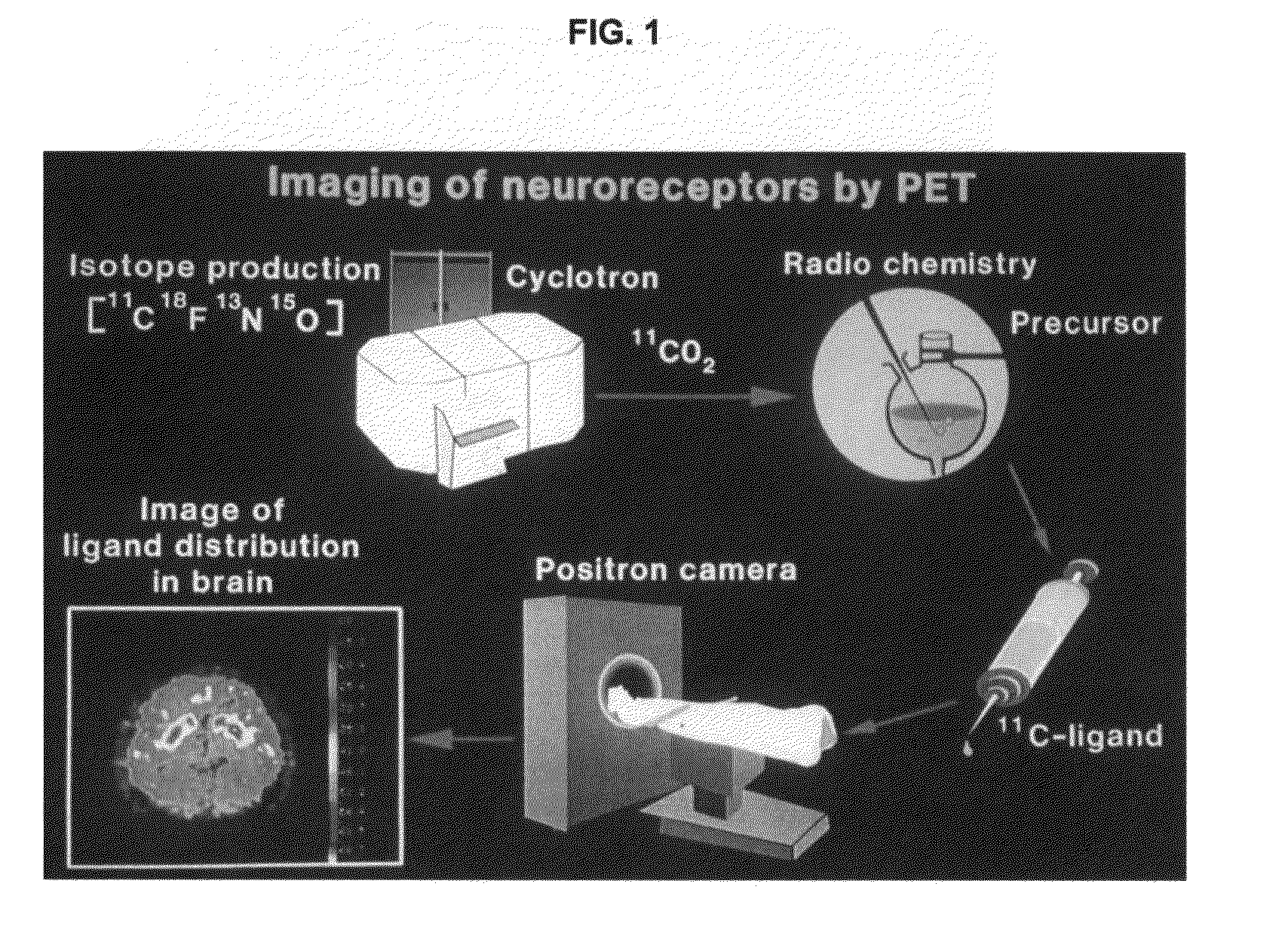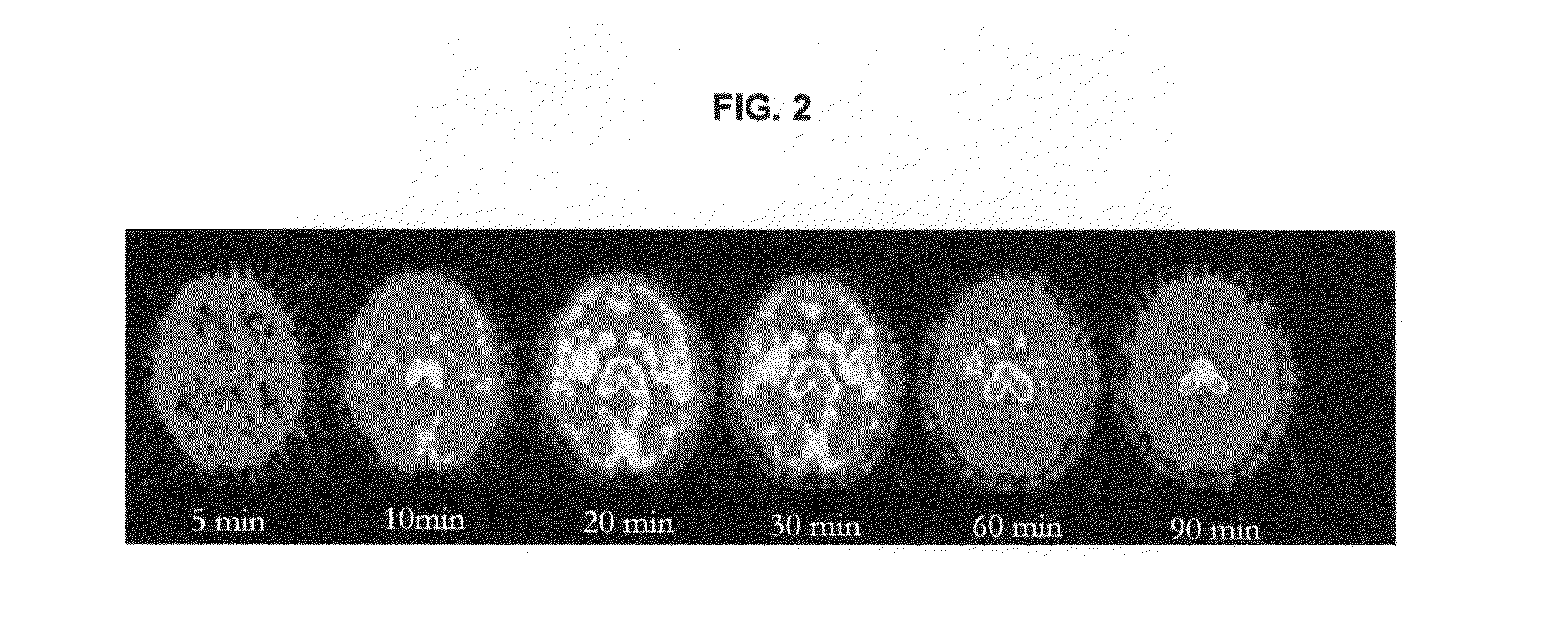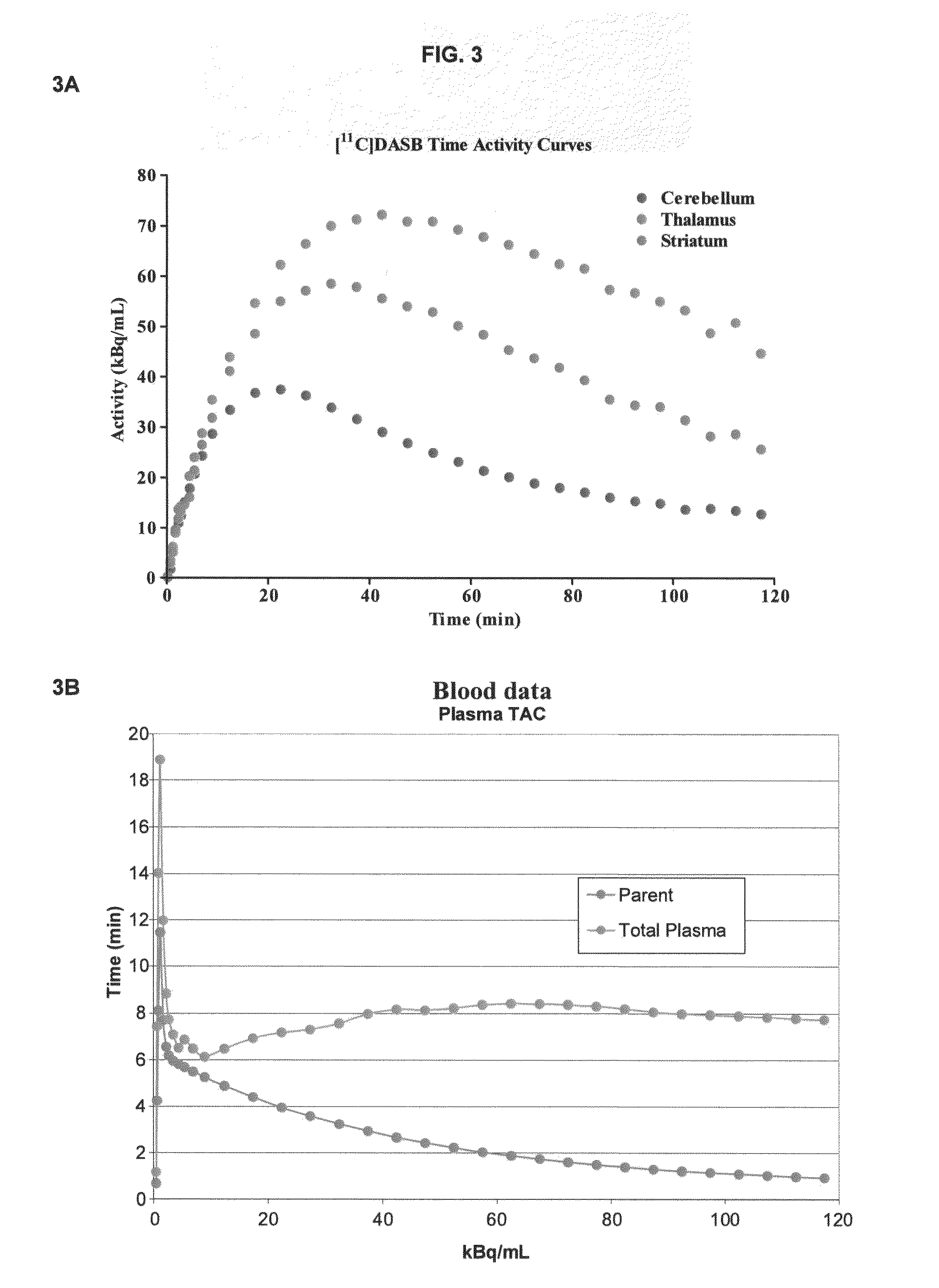Methods for Diagnosing Diseases and Evaluating Treatments Therefor Using Pet
a technology of positron emission tomography and diagnostic methods, applied in the field of diagnostic and evaluating treatment protocols using positron emission tomography (pet) data analysis, can solve the problem of not having known diagnostic pet data analysis tools that are appropriate to quantify, and achieve the effect of increasing the sbc of the patien
- Summary
- Abstract
- Description
- Claims
- Application Information
AI Technical Summary
Benefits of technology
Problems solved by technology
Method used
Image
Examples
example 1
MRTM2 and MRTM
[0058]MRTM2 (two-parameter multilinear regression analysis) uses the following operational equation developed from the tracer kinetic model (Ichise M, et al., J Cereb Blood Flow Met; 23:1096-1112 (2003):
CT(T)=R1(k2′∫0TCT′(t)t+CT′(T))-k2∫0TCT(T)tEquation1
[0059]Parametric imaging of BP requires initial estimation of k2′ (tissue tracer clearance rate from the reference tissue (kidney cortex in the present case)). This k2′ is a single value needed to plug into Equation 1 before performing voxel-wise parametric imaging. k2′ estimation requires two ROI TACs and MRTM (multilinear regression analysis). (Id.). The MRTM operational equation is
CT(T)=R1k2′∫0TCT′(t)t-k2∫0TCT(t)t+R1CT′(T)Equation2
In PANC MAP (module 2), functionally defined ROI TACS (β-cell pancreas and kidney cortex) from Module 1 are used as opposed to the conventional MRI or CT defined ROIs. This concept of functionally defined ROI is a new idea in PANG MAP.
[0060]The accuracy of BP on MRTM2 parametric images depe...
example 2
Evaluation of Accuracy of k′2 Estimation by MRTM
[0061]A. MRTM k′2 Using Neuroreceptor Ligand[18F]FP-TZTP
[0062]An F-18 labeled muscarinic-2 (M2) subtype-selective agonist, 3-(3-(3-[18F]Fluropropyl)thio-1,2,5-thiadiazol-4-yl)-1,2,5,6 tetrahydro-1-methylpyridine ([18F]FP-TZTP), has been successfully used for positron emission tomography (PET) imaging of central M2 cholinergic receptors in humans. Cohen R M, Podruchny T A, Bokde A L, Carson R E, Higher in vivo muscarinic-2 receptor distribution volumes in aging subjects with an apolipoprotein E-epsilon4 allele. Synapse 49:150-156 (2003). Kinetic modeling studies of [18F]FP-TZTP PET data have shown that [18F]FP-TZTP time-activity data can be described by the one-tissue (1T) compartment model with two kinetic rate constants, K1 (mL / min / cm3, the rate constact for transfer from plasma to the tissue) and k2 (min−1, the tissue clearance rate constant). Carson R E, Kiesewetter D O, Jagoda E, Der M G, Herscovitch P, Eckelman W C, Muscarinic cho...
PUM
| Property | Measurement | Unit |
|---|---|---|
| Flow rate | aaaaa | aaaaa |
| Distribution | aaaaa | aaaaa |
Abstract
Description
Claims
Application Information
 Login to View More
Login to View More - R&D
- Intellectual Property
- Life Sciences
- Materials
- Tech Scout
- Unparalleled Data Quality
- Higher Quality Content
- 60% Fewer Hallucinations
Browse by: Latest US Patents, China's latest patents, Technical Efficacy Thesaurus, Application Domain, Technology Topic, Popular Technical Reports.
© 2025 PatSnap. All rights reserved.Legal|Privacy policy|Modern Slavery Act Transparency Statement|Sitemap|About US| Contact US: help@patsnap.com



